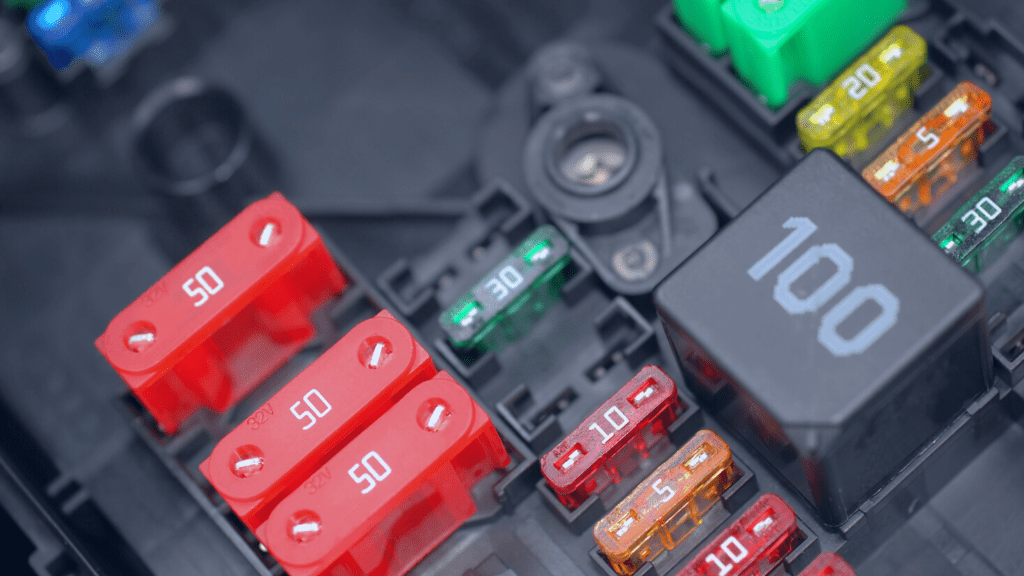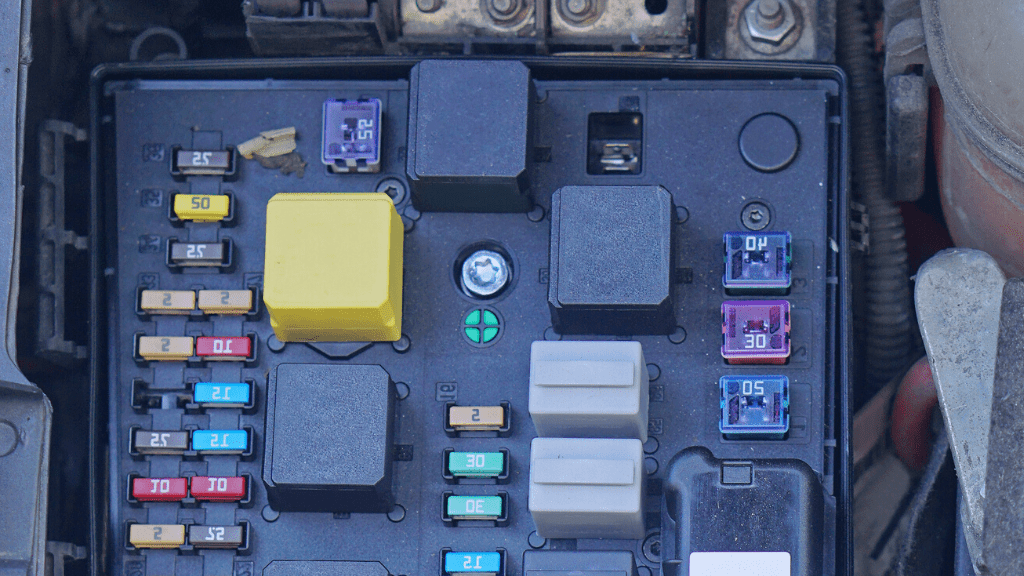What Size Fuse For 1000 Watt Amp (Explained In Detail)
You only enjoy the protection offered by an electrical fuse when its rating fits the circuit or electrical wiring system into which it is installed.
When this rating is higher than required, you experience overcurrent damage to your speakers, and when lower, you have a constantly broken fuse wire and audio system circuit.
Keep on reading to learn the appropriate ratings for the fuse you need to install to protect a 1000-watt amplifier system in your car or home.
Let’s get right in.
What Size Fuse for 1000 Watt Amp
For a 1000-watt audio amplifier in your car, you need a fuse of about 80 amps to properly protect it. This estimation is gotten from the formula I=P/V, which takes the amplifier’s power rating, the car’s alternator output, and the amplifier’s class efficiency into account.

Although the car audio amplifier typically comes with an internal fuse that safeguards it from power surges, this protection doesn’t cover the external wiring of the speakers and the entire audio system.
This means that you still need an electrical fuse to protect your entire amplifier system and wiring in case of any form of power surge.
Ordinarily, picking a new electrical fuse should be pretty straightforward. You just select one with the same model and ratings as the old unit with a blown fuse wire.
However, this becomes tricky if you don’t have any indications of the rating or if you are installing a new amplifier into your car.
To help you fully understand how to properly determine the right electrical fuse size, we will explain what the three factors mentioned above are. We also show you their place in the formula presented.
Amplifier Power Rating and Class Efficiency
The audio amplifier’s power is the output wattage it emits when working. When you look at your car’s amplifier, you see a watt value in its specifications. In our case, we expect to see a 1000-watt specification. Now, there are other factors to consider.
Audio amplifiers typically come in different classes and these classes are characterized by varying efficiency levels when working. The efficiency level of an amplifier is the amount of wattage output it emits compared to its wattage input.
The more popular classes of audio amplifiers and their respective efficiency levels are presented below:
- Class A – 30% efficiency
- Class B – 50% efficiency
- Class AB – 50% – 60% efficiency
- Class C – 100% efficiency
- Class D – 80% efficiency
You first consider these efficiency values when calculating the right value of wattage or power to input into the formula. How do you implement them?
Class A amplifiers are typically used within low-power circuits due to their inefficiency. This means you don’t commonly see them within 1000-watt systems.
You are more likely to deal with the class AB, class C, and class D amplifiers due to their higher efficiency and safety within 1000-watt systems.
For a class D 1000-watt unit with 80% efficiency, for instance, your amplifier’s initial input wattage goes up to 1250 watts (1000W / 80%). This means that the power value you insert into the formula is 1250 watts rather than 1000 watts.
Following this, you keep the value of 1000W for class C amplifiers and about 1660W for class AB amplifiers.
Alternator Output
When we calculate the fuse rating for amplifiers, we are actually calculating the current or amperage sent by its power supply. In the case of a car amplifier, we consider the current supplied by the alternator.
Additionally, electrical fuse ratings are always depicted in amperage. If you see a “70” rating on a fuse, this means it is rated for 70 amps. Since the power specifications of speakers typically come as wattage values, the formula helps to make the appropriate conversions.
A 1000-watt amplifier always works with a 1000-watt alternator, so we aim to convert this wattage supply to an ampere supply. This is where the formula comes in.
The base formula to convert watts to amps is:
Amps = Watts/Volts or I=P/V where “I” represents ampere, “P” represents wattage, and “V” represents voltage.
Identifying the voltage supplied by an alternator is not hard as it is typically included in the alternator’s specifications. On average, this value is between 13.8V and 14.4V, with the latter being more common. In the formula, you then keep 14.4V as your constant voltage value.
If you want to be accurate with your estimations, you may employ a multimeter to test the alternator’s voltage supply. Our guide on diagnosing an alternator with a multimeter helps with this.
Fuse Rating Examples For Amplifier Watt and Class
Looking at all that has been said, if you intend to get the recommended rating for an amplifier, you first consider its class and efficiency. You apply this efficiency factor to get the amplifier’s initial input wattage and then convert this to ampere to know the amount of current supply that is safe for it.

Class AB 1000-watt Amplifier
With a class AB 1000-watt amplifier, you find the initial watt input, which is about 1660W looking at its 60% efficiency factor (1000W / 0.6). You then apply the formula:
I = 1660/14.4 = 115A
The fuse size you employ for class AB amplifiers will then be units with ratings close to this value. This will be a 110 amp fuse.
Class C 1000-watt Amplifier
With their efficiency at 100%, you get the same power output from class C amplifiers as their power input. This means “P” will remain at 1000W. The formula then goes thus:
I = 1000/14.4 = 69.4A
By rounding this off to the closest rating available, you then opt for a 70 amp fuse.
Class D 1000-watt Amplifier
Having an efficiency of 80%, class D 1000-watt amplifiers receive an initial power supply of 1,250W (1000W / 0.8). You then calculate the rating using these values in the formula:
I = 1250/14.4 = 86.8A
You look for an automotive fuse with an ampere of 90A.
What about fuses of different watt outputs?
Class D 500-Watt Amplifier
For a 500-Watt amplifier, the principles remain the same. Instead of using 500W in the formula, you consider the efficiency of the class. In this case, 80% efficiency means you make use of 625W instead. To calculate your rating, you then implement these values in the formula.
I = 625/14.4 = 43.4A
Rounding this to the nearest available rating, you look for a 45 amp fuse.
Class D 1000-Watt fuse in 120V Circuits
If the amplifier you wish to protect with a fuse is used in your home rather than your car, the AC power supply to it is typically either 120V or 240V. For 120V amperage supplies, you implement the values:
I = 1250/120 = 10.4A. This means you opt for a 10-amp fuse.
For 240V amperage supplies, you apply this formula instead:
I = 1250/240 = 5.2A. You round this number off to the closest available rating, meaning you opt for a 5A fuse.
In addition to all these, however, there’s more to consider when safely determining the ampere rating of a fuse.
Factors Affecting the Rating Of a Fuse
There are multiple factors considered when determining fuse size and these either make the basic rating higher or lower than what is determined by the formula.
Some of these factors include the sensitivity of the device the fuse protects, the available air conditioning systems, and how connecting cables converge.
When selecting a fuse, you also consider its voltage rating, maximum fault current, and physical size. The type of fuse applied within the circuit mostly determines the factors to look out for.
With car amplifiers, you employ an automotive blade fuse, while you mostly find cartridge fuses in your home appliances.
Now, when determining a fuse rating, there is one important factor worth shedding more light on. This is the topic of fuse derating.
Fuse Derating
Derating is when the recommended fuse wire rating is altered to avoid nuisance blowing. The temperature of the environment in which you intend to use the fuse is the important factor here and affects the final fuse rating.

The standard testing temperature for a fuse wire is 25°C, which makes fuses derated 25% higher than their regular ratings. Rather than using a fuse of 70A for a class C amplifier, you opt for one with a rating that is 25% higher.
This means you use a 90A fuse. This variance may be higher or lower depending on the other factors mentioned above.
FAQs
How Many Amps Does a 1000W Amp Use?
This depends on the voltage the amplifier works with. A 1000W amp uses 8.3 amperes when working in a 120V circuit, 4.5 amperes when in a 220V circuit, and 83 amperes when working with a 12V circuit.
What Size Fuse Do I Need For 1200 Watts?
For 1200 watts, you use a 10 amp fuse in a 120-volt circuit, a 5 amp fuse in a 240-volt circuit, and a 100 amp fuse in a 12-volt circuit. These vary depending on the amount of derating required.

Author
Alex Klein is an electrical engineer with more than 15 years of expertise. He is the host of the Electro University YouTube channel, which has thousands of subscribers.
